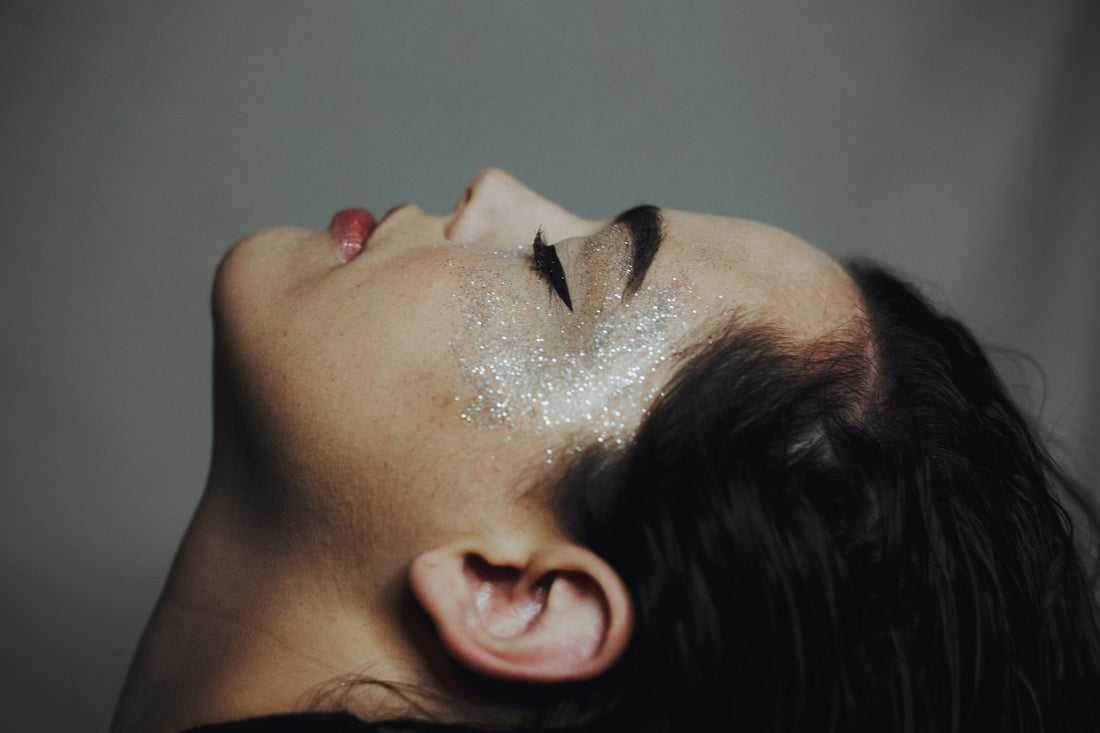Have you been attacking your oily skin with every cleanser you can get your hands on, in hopes that you can finally get that squeaky-clean feeling?
What if we told you there’s a risk that your “cleanse” might be sabotaging your skin?
It’s true! Studies from dermatologists have shown that one of the biggest mistakes people with oily skin make is overdrying their complexion.
When you strip your skin too aggressively, your body starts to panic – which causes it to produce even more oil to compensate. In a sense, your glands go into overtime to replace what you just removed.
So where’s the happy balance? Once you learn how to cleanse oily skin properly, you can break free from the pattern and finally achieve the balanced, healthy complexion you’re looking for!
Why Your Skin Produces Oil (Yes, It’s Actually A Good Thing!)
Let's clear up a major misconception: oil isn't your enemy.
Sebum (your skin's natural oil) is a key part of your body’s ability to keep your skin healthy. It protects your barrier by delivering antioxidants and fighting off bacteria, as well as keeping your skin hydrated.
The problem isn't that your skin creates oil; it's that sometimes it produces too much. That excess can lead to clogged pores, and that “shine” you feel leads to breakouts. But for most, genetics and hormones are the main drivers of oil production, not dirty skin.
No amount of scrubbing will change your skin type. In fact, harsh cleansing often triggers a rebound effect where your skin produces even more oil to protect itself.
This is why so many people with oily skin find themselves in a vicious cycle.
The more they cleanse, the oilier they get.
The oilier they get, the more they want to cleanse.
Breaking this cycle requires a bit of a mindset shift about what clean skin should feel like.
The Golden Rules of Cleansing Oily Skin
Rule #1: Choose Gentle, pH-Balanced Formulas
Your skin's natural pH hovers around 5.5 – which is slightly acidic. But many harsh cleansers are highly alkaline, which can disrupt the delicate balance of your skin, and potentially compromise your barrier function.
To make sure you don’t disrupt your skin too much, look for cleansers with a pH between 5 and 6. These will work with your skin, not against it.
Eva Naturals' Glycolic Acid Face Wash offers gentle exfoliation while helping you maintain your overall skin balance. The glycolic acid in the product helps control oil production without the harsh stripping effect that traditional acne cleansers can cause.
Rule #2: Limit Cleansing to Twice Daily
More isn't always better when it comes to cleansing oily skin. So stick to morning and evening cleansing, and add one after any time you may sweat more than normal.
Any more than this can disrupt your skin's natural rhythm and trigger excess oil production.
In the morning, a gentle cleanse can help remove any overnight oil buildup. In the evening, your cleanse should focus on removing sunscreen, makeup, and any of the day's accumulation of dirt and pollution. Keep it simple, and you’ll see consistent results!
Rule #3: Embrace the 30-Second Rule
Quick splash-and-go cleansing isn’t quite enough – even when you’re trying to avoid longer, harsher cleanses. They just don’t give your cleanser time to work effectively.
Instead, try to find a middle ground. Massage your cleanser into damp skin for a full 30 seconds. 30 seconds is enough for all the surfactants to dissolve skin oil and other junk without having to use any harsh pressure or use more product than necessary.
As you cleanse, use gentle, circular motions. Think massage, not scrub. Your skin should never feel raw or irritated after cleansing – if it does, you might be using the wrong product or being too aggressive.
What Ingredients Help Oily Skin?
Salicylic Acid
This beta hydroxy acid (BHA) is oil-soluble – science-y terms that mean salicylic acid can penetrate through sebum to clean inside your pores. Salicylic acid is great for dissolving the oil and dead skin cells that lead to blackheads and breakouts.
Niacinamide
Did you know that niacinamide can actually help regulate your body’s natural sebum production over time? That’s why a quality serum or cleanser with the right amount of niacinimide can help boost your barrier function and reduce inflammation.
Glycerin
Yes, oily skin needs moisture! Glycerin is a humectant that draws water into your skin without adding any heaviness or greasiness. It helps you feel hydrated after you cleanse, and prevents that “tight feeling” that can trigger excess oil production.
The best way to get the best of all the right ingredients? Eva Naturals' cleansers combine these skin-loving ingredients in formulas designed to cleanse effectively without disruption.
The Key to Healthy Skin? Finding a Balance
Getting that perfect, healthy-looking skin isn’t found in harsh cleansing. It’s all about knowing how your skin works and what it needs to stay healthy!
Remember, your goal isn't to eliminate all oil but to maintain a healthy balance. Your skin should feel clean and refreshed after cleansing, never tight or stripped.
Are you ready to break free from the overstripping cycle? Eva Naturals offers a complete line of gentle yet effective cleansers designed specifically for oily and acne-prone skin. Each formula is carefully balanced to clean thoroughly while respecting your skin's natural barrier.
Shop our cleanser collection and discover how the right products can transform your oily skin from a daily struggle into your best asset.
FAQ
How can I wash my face without stripping natural oil?
Keep your skin healthy and protected by using a gentle, pH-balanced cleanser and lukewarm water. Massage for 30 seconds without scrubbing, then rinse thoroughly. Your skin should feel clean but not tight!
What is the best way to clean oily skin?
The best approach combines gentle cleansing twice daily with ingredients like salicylic acid or niacinamide. Avoid harsh surfactants and hot water. Focus on consistency rather than intensity.
How do you wash your face properly for oily skin?
Wet your face with lukewarm water, then apply a dime-sized amount of gentle cleanser. As you wash, use soft, circular motions for 30 seconds. Pay extra attention to oily areas, but don't scrub. Rinse thoroughly, pat dry – and always follow with moisturizer.
Why is my skin still oily after cleansing?
If your skin remains oily immediately after cleansing, you might be overstripping it. This can trigger rebound oil production. Instead, try a gentler cleanser and ensure you're moisturizing. Remember, genetics plays a role. Some skin naturally produces more oil, regardless of your routine.
How often should I exfoliate oily skin?
As you build your own personal skincare routine, take it slow. Start with 1-2 times per week using a gentle chemical exfoliant, and keep any physical scrubs to once weekly at most. Over-exfoliation can damage your barrier and increase oil production.

